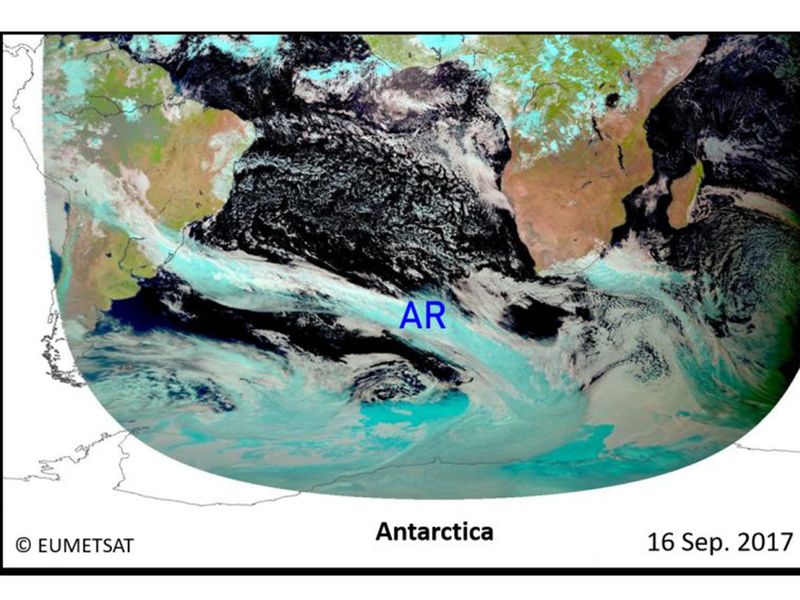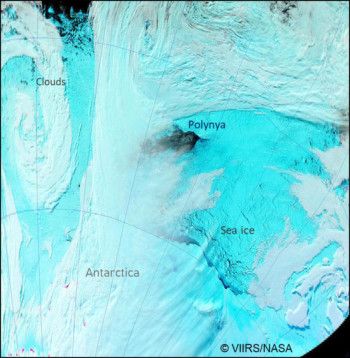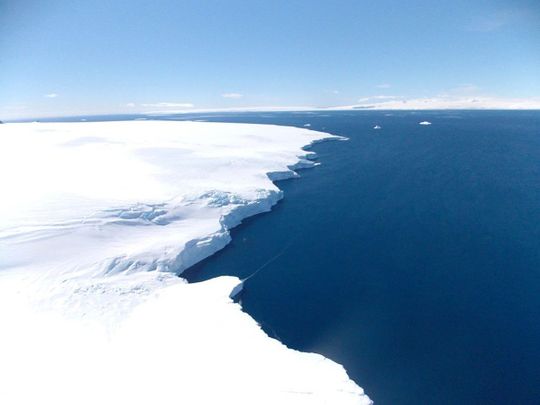Abu Dhabi: Researchers in Abu Dhabi have unravelled a more than 40-year-old scientific mystery about why a body of unfrozen ocean has appeared within a thick body of ice during Antarctica’s winter.
Known as a polynya event, this creation of the water bodies within ocean ice has occurred twice in the Weddell Sea in Antarctica — once in 1973 and again in 2017. Scientists at Khalifa University’s Environmental and Geophysical Sciences (ENGEOS) lab have discovered that synoptic-scale atmospheric rivers (AR) emerging from the tropics and spreading poleward into the Antarctic Ice Sheet are actually initiating this phenomenon. Anomalous increase in surface temperature was induced by the atmospheric rivers over the ice pack, which caused melting and thinning of the ice, further leading to the opening of what is known as the ‘Polynya’ event.
The study also connected this phenomenon, for the first time, to the larger-scale poleward movement of heat and moisture transported by atmospheric rivers, thereby demonstrating their role in the melting of the ice in Antarctic Sea during the winter and early spring seasons.
The research, which was led by Dr Diana Francis, senior scientist and head of ENGEOS lab, was recently published in the journal Science Advances. It has been co-authored by Dr Kyle Mattingly from Rutgers University in the United States, Dr Marouane Temimi from Stevens Institute of Technology in the US and Dr Rob Massom and Dr Petra Heil from the Australian Antarctic Division. Khalifa University is the lead institution for this research project, which is funded by Abu Dhabi Future Energy Company Masdar.
According to Dr Francis, the study demonstrates that changes in the climate occurring at one place on the planet, say for example in the tropics, can have worldwide impact and bring about changes as far as the South Pole.
“Our analysis shows that the atmospheric rivers that initiated the polynya event in September 2017 were the most intense on record. The poleward transport of moisture and warmth by the atmospheric rivers was also the highest on record. Surprisingly, these atmospheric rivers resulted in the highest amount of snowfall on record over the study area, but because of the warm temperatures, it was warm snow that enhanced the ice melt and inhibited refreezing,” she explained.

Image Credit: Supplied
“Previous studies have shown that under a warmer climate, atmospheric river activity in the Southern Ocean will intensify considerably. Given the role of atmospheric rivers in melting sea ice, as demonstrated in this study, it is becoming a pressing concern to assess the impact of atmospheric rivers on the Antarctic-wide sea-ice cover,” Dr Francis said.
Dr Francis’ previous research in 2019 into this phenomenon had found the important role of storms in triggering the opening of the polynya. However, her current research has found that if atmospheric rivers had not melted the ice before the storms (a ubiquitous feature around Antarctica, which is not the case of the ARs that are of large scale spanning from the tropics to Antarctica), they would not have been able to trigger the opening of the large area of water.

Image Credit: Supplied
Building on such research expertise and previous achievements, Khalifa University aims to further broaden the scope of its polar research, attracting young scientists and students to the next phase of this project for addressing the associated environmental challenges.
Read more
Earlier in 2019, Tawaddod Alkindi, the university’s Material Science and Engineering graduate, had the opportunity to participate in the installation of 105 solar panels and three inverters that provide 30 kilowatts to Casey research station’s grid, the first solar power array at an Australian Antarctic research station.


